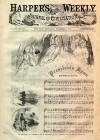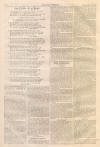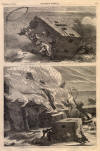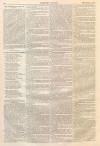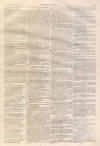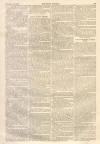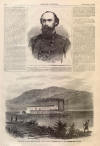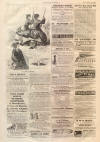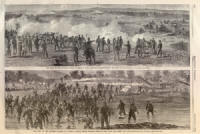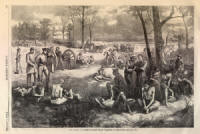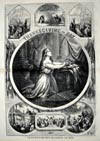General Granger
|
|
This Site:
|
HARPER'S WEEKLY. [DECEMBER 5, 1863. 780 GEN. GORDON GRANGER, OF THE ARMY OF THE CUMBERLAND.—[PHOTOGRAPHED AT CHATTANOOGA.]GENERAL GORDON GRANGER.ON this page we publish a portrait, from a photograph taken at Chattanooga, of GENERAL GORDON GRANGER, who now commands General Thomas's late corps in the Army of the Cumberland. Gordon Granger was born in this State about the year 1826, and is consequently thirty-eight years of age. He entered West Point in 1841, and graduated in 1845, entering the Second Infantry. In July of the following year he was transferred to the Mounted Rifles. When the war with Mexico broke out he accompanied General Scott on his campaign; and distinguished himself so highly at Contreras and Churubusco that he was brevetted First Lieutenant. Again, at Chapultepec, he won honors, aud was brevetted Captain. At the close of the war he was transferred to the cavalry arm of the service; and was in the Third Cavalry when the Southern rebellion again compelled his country to call upon him for assistance. Resignations of traitors made way for his advance to a Captaincy in that regiment. He was one of the first regular army officers who was allowed to accept a commission as Colonel of Volunteers. His services being too valuable to be wasted on a single regiment, he was, on 17th September, 1862, commissioned Brigartier-General of Volunteers, and attached to the Army of the Cumberland. The country heard of him from time to time, as the war progressed is the West—now in a battle, now in a brilliant cavalry raid—and the report always was that he was doing his duty nobly and steadfastly. At last came the battle of Chickamauga. Of his fortunate advent to the support of Thomas on that occasion the following brief extract from the Herald correspondence may give some idea: General Thomas, near the centre of the army, was engaged, about one o'clock, sitting on his horse in the hollow of a ridge in an open field behind Harker's brigade, busy watching a heavy cloud of dust in his rear, in such a direction that it might be General Granger with reinforcements, or it might be the enemy. It cast a cloud over his spirits which was plainly visible to one who observed him, as I confess I did that day, with ever-increasing admiration. The truth is, that General Thomas at one o'clock P.M., on the last day of this battle, had no disposition to fight any more, and feared the result of the next rebel attack. And so he watched with natural anxiety the development of the cloud of dust, which was then no more than a mile distant. If it dissolved to reveal friends, then they would be welcome; for at this hour fresh friends were all that was needed. If it disclosed the enemy, then the day was lost, and it became the duty of those who formed the "last square" on the battle-field to throw into the teeth of the victorious enemy a defiance as grandly contemptuous as that of Cambronne, and die. There was no escape if the troops moving were the cavalry of the enemy. "Take my glass, some one of you whose horse stands steady. Tell me what you see." In the dust that emerged, thick as the clouds that precede the storm, nothing could be distinguished but a moving mass of men. But it was seen that they were infantry. This information made Thomas breathe more freely. If infantry, it was mulch more likely to be Granger than the enemy. At this moment a tall officer, with the yellow straps of a captain of cavalry, presented himself to General Thomas. "General," he said, "I am cut off from General Negley, and can not find him. I beg leave to report to you for duty, Sir, of any character."
"Captain Johnston," said the General to the speaker (Captain Johnston, Second Indiana Cavalry, Inspector-General on General Negley's Staff), "ride over there, and report to me who and what that force is." In an instant Johnston was gone—gone upon a mission which proved itself to be a more dangerous one than any of us supposed. As he emerged slowly from a dense foliage of willows growing about a narrow stream in the rear we heard the report of several rifles, and saw him halt for a second, and then, dashing spurs to his horse, disappear in a thick wood in the direction of the coming mass of troops still enveloped in clouds of dust. In a few minutes he again emerged from this timber, and following him came the red, white, and blue crescent-shaped battle-flag of Gordon Granger. We had wished for night, and it was Blucher who had come to us. At a quarter past one Steadman first, and Gordon Granger afterward, had wrung the hand of the statue Thomas, who had gone all through the terrible scenes of the last two days' battle to be melted and moved at this hour. As Granger came up I felt that from the face of the heavens a great cloud had passed, and the sun was shining once more upon us as with the same benignant rays of former victories. THE ARMY OF THE POTOMAC.ON page 772 we reproduce two pictures by Mr. Waud, illustrating the recent skirmishing in Virginia. Mr. Waud writes: "THE RECENT FIGHTING AT KELLY'S FORD."While General Sedgwick, with the right wing of the army, was advancing upon Rappahannock Station, General French, with a command of three corps, moved for a crossing at Kellysville. Here he found the ford protected by some rifle-pits upon the opposite bank, and beyond by other field-works, for guns as well as men. Upon these our guns opened with telling effect—Randolph's battery giving them shell, canister, and case in front, while Sleeper's battery enfiladed them from a height to the left, near Mount Holly Church—General French's head-quarters. Another 3-inch gun battery, near Randolph's light twelves, also joined in the cannonade, as well as some 4 1/2-inch pieces on the hill. After a short action the accuracy of our fire caused the rebels to take to the woods in confusion, leaving a number of men in the rifle-pits. At these, wading middle-deep through the cold river, General Hobart Ward directed one of his regiments to charge. Once on the opposite shore, the advance dashed up the low ridge of earth which formed the defense, and the garrison was captured. The sketch presents a view from the island, after the deepest portion of the river was crossed. "The more extended picture shows the same thing from another point—the houses, mill, etc., called Kellysville, beyond the ford; still further, the rifle-pits and pine woods, where the enemy found refuge. The houses in Kellysville, also Brown's, on the left, were riddled. Sleeper's battery, on the authority of some prisoners, is said to have taken off the legs of some of the rebel staff officers. Their horses were killed, and left upon the ground, to show the severity of the fire. A whole brigade ran away, leaving their muskets stacked, and then came out in small squads to get them again." At latest dates the Army of the Potomac was once more "stuck in the mud"—in which unhappy state it has spent a large portion of its existence. Meade is said to command a very large army—as large as it was at Gettysburg. About Lee's force accounts differ, some giving him 70,000 men, others less than half that force. THE ARMY OF THE CUMBERLAND—THE "CHATTANOOGA," A STEAMER BUILT BY THE SOLDIERS.—[SEE PAGE 775.]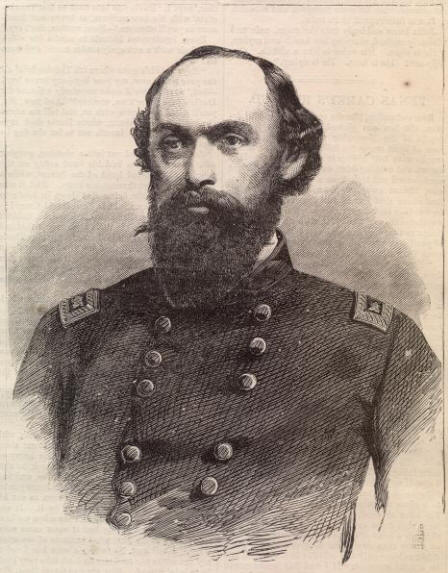 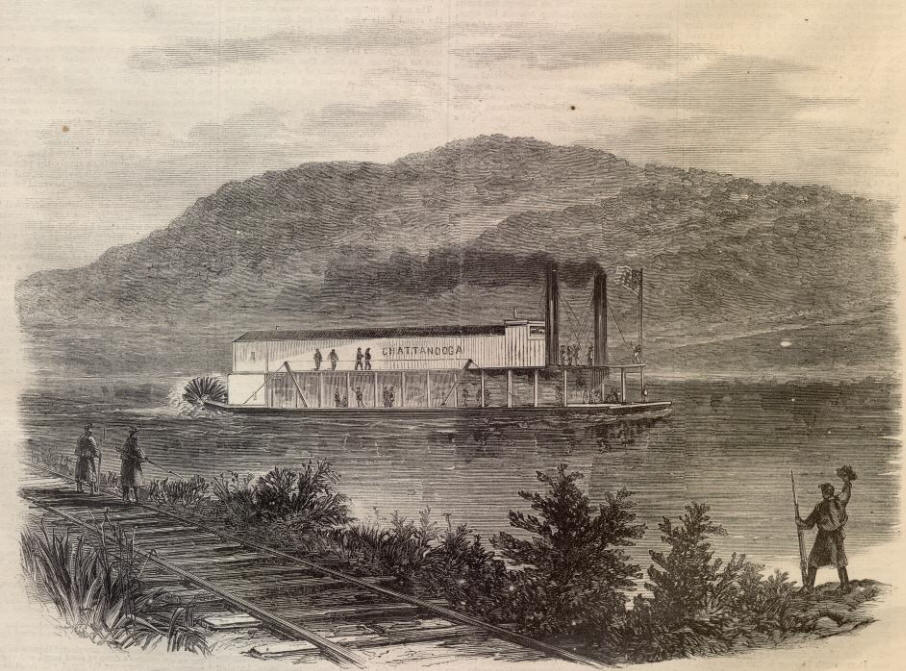 |
||||||||||||||||||||||
|
|
||
|
|
Site Copyright 2003-2018 Son of the South. For Questions or comments about this collection, contact paul@sonofthesouth.net |
|
|
Are you Scared and Confused? Read My Snake Story, a story of hope and encouragement, to help you face your fears. |
||
